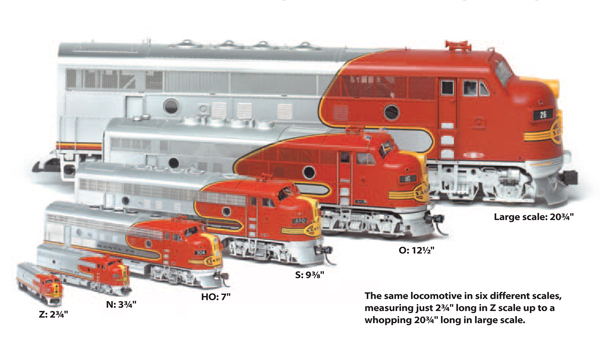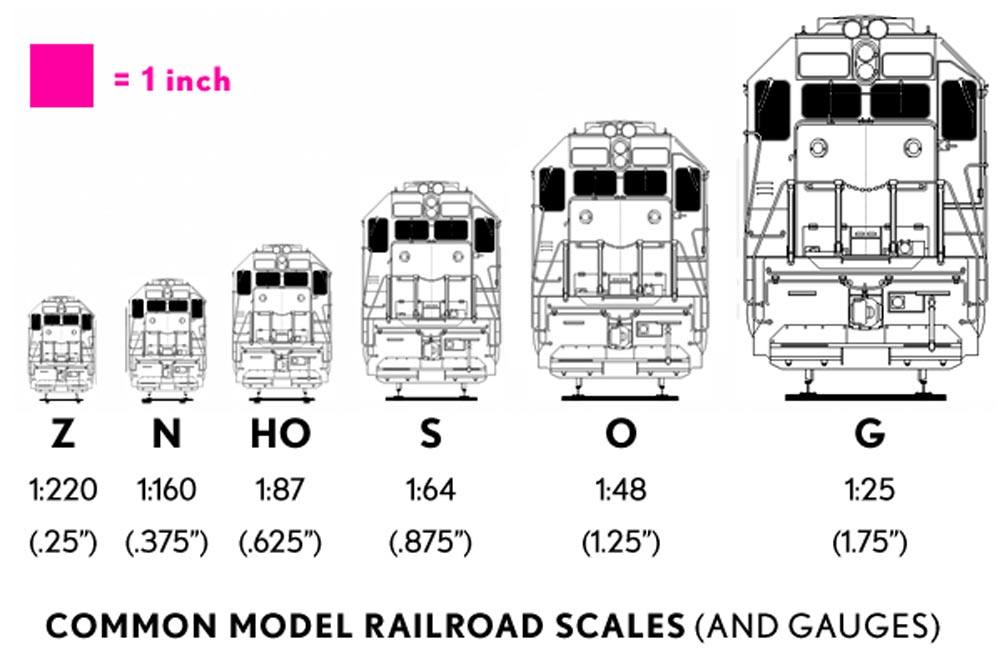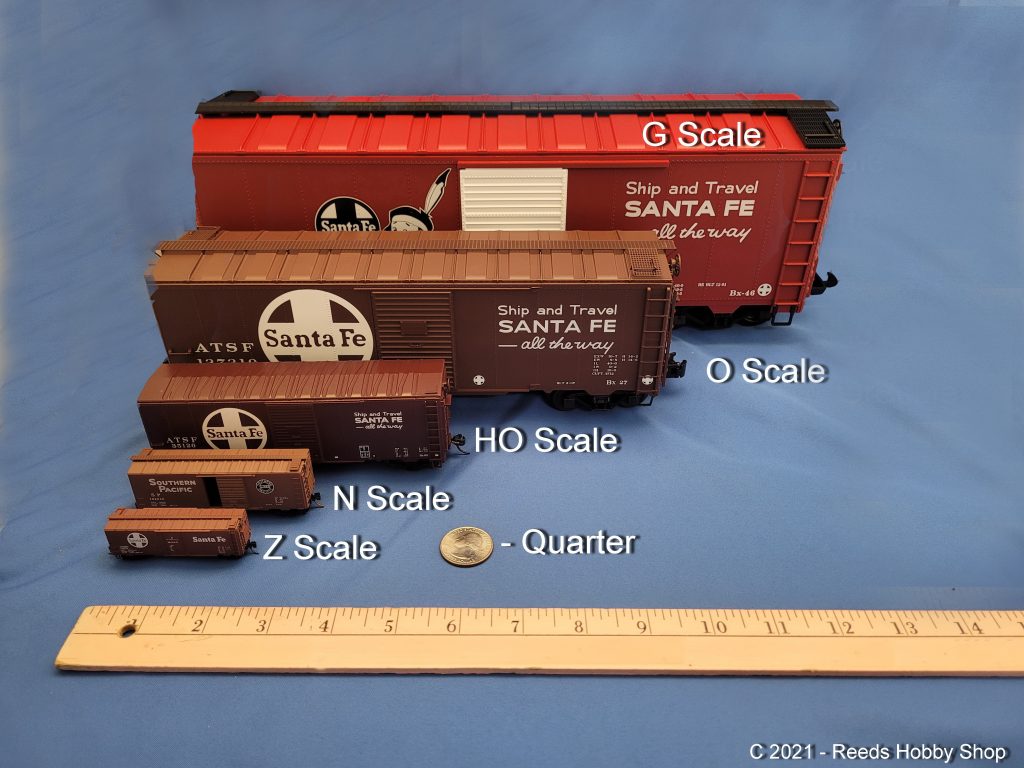Model trains are classified according to scale and gauge. Scales may be expressed as a numeric ratio (e.g. 1/87 or 1:87) or as letters (e.g. Z, N, HO, S, O and G.)
Although scale and gauge are often confused, scale means the ratio between a unit of measurement on a model compared with a unit of measurement in corresponding full size prototype, while gauge is the distance between the two running rails of the track. Most railways have a track gauge of 4 ft 8 ½ in known as “standard gauge”, but there are also narrow-gauge railways where the track gauge is less than standard. In a similar manner, a scale model railway may have several track gauges in one scale.


Z scale (1:220). Introduced by the German firm of Märklin in 1972 depicting German and other European prototypes.
N scale (1:160). This is the second most popular scale worldwide. N scale was developed by the German firm of Arnold Rapido in the early 1960s.
HO scale (1:87). This is the most popular model railway scale in the world. There is a vast selection of ready-to-run, kits and parts for locomotives, rolling stock and scenic items from many manufacturers depicting trains from all around the world.
S scale (1:64). The “S” name is derived from “sixty-fourth”. In the US, American Flyer toy trains used this gauge, but it is also used for more precise modeling and supported by several manufacturers.
O scale (1:48). In the US, this is frequently considered a “toy train” scale rather than for scale modelers. Though toy trains use this gauge, they are often nowhere near scale. Scale modelers have begun to use this gauge for their scale models, resulting in a two separate groups of modelers within this “scale.” O-27 is a Lionel variant that has a slightly shorter profile and sharper 27 inch diameter curves than typical O scale track.

G scale (1:20.3 to 1:32). Generally used for garden railways of narrow-gauge prototypes, and uses a track gauge of 45mm. The scale ranges approximately from 1:20.3 to 1:32, according to the size and gauge of the prototype.
Mon – Sat: 10 AM – 6 PM
Sun: 12PM – 4PM
8039 La Mesa Blvd
La Mesa CA 91942